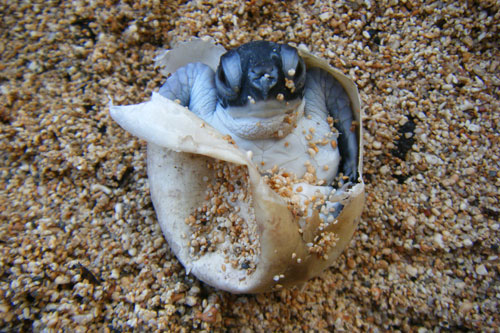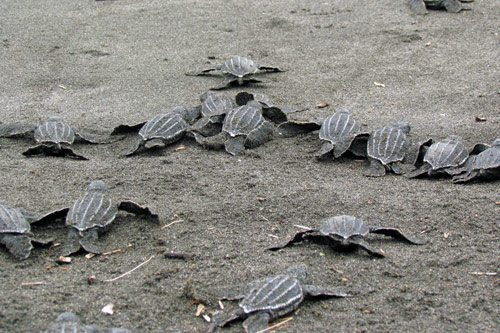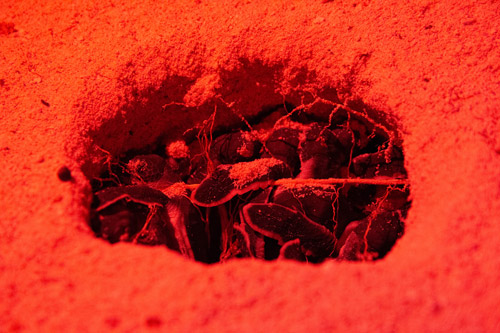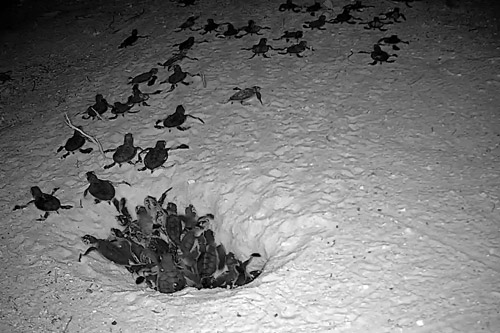During the course of incubation, the embryo grows inside the egg from a few cells at the beginning to a self-sufficient animal hatching (coming out of the egg) some 50 to 80 days later. Hatching typically begins with the baby turtle using a small, point keratinous bump on the tip of their snout (called caruncle) to break the egg.
As there are many eggs in each nest, and they are buried several centimetres in the sand, baby turtles will hatch almost synchronously with their siblings to allow simultaneous digging to make their way out of the nest faster! This behaviour is called ‘social facilitation’ as the synchronous effort of many individuals might be needed to dig successfully through the column of sand above the nest chamber. This effort may take 3-5 days in total as intense digging activity also needs some time of resting.
Once one of the hatchlings decides it is time to continue, its digging will trigger its siblings to do the same. Hatchlings are also clever in avoiding high temperatures. Emerging during daylight and under the hot sun can cause heat exhaustion, and the hatchlings will be more exposed to predators. Therefore, most hatchlings will emerge after the sand cools in the late afternoon or at night, or during cool cloudy days. Hatching simultaneously is also a clever idea to decrease the overall predation rate of the baby turtles as they leave the beach and swim out to sea. Once they emerge at the sand surface, they will quickly crawl towards the ocean.


References:
- Carr, A., & Hirth, H. (1961). Social facilitation in green turtle siblings. Animal Behaviour, 9(1-2), 68-70.
- Rusli, M. U., Booth, D. T., & Joseph, J. (2016). Synchronous activity lowers the energetic cost of nest escape for sea turtle hatchlings. Journal of Experimental Biology, 219(10), 1505-1513.
- Saito, T., Wada, M., Fujimoto, R., Kobayashi, S., & Kumazawa, Y. (2019). Effects of sand type on hatch, emergence, and locomotor performance in loggerhead turtle hatchlings. Journal of experimental marine biology and ecology, 511, 54-59.



